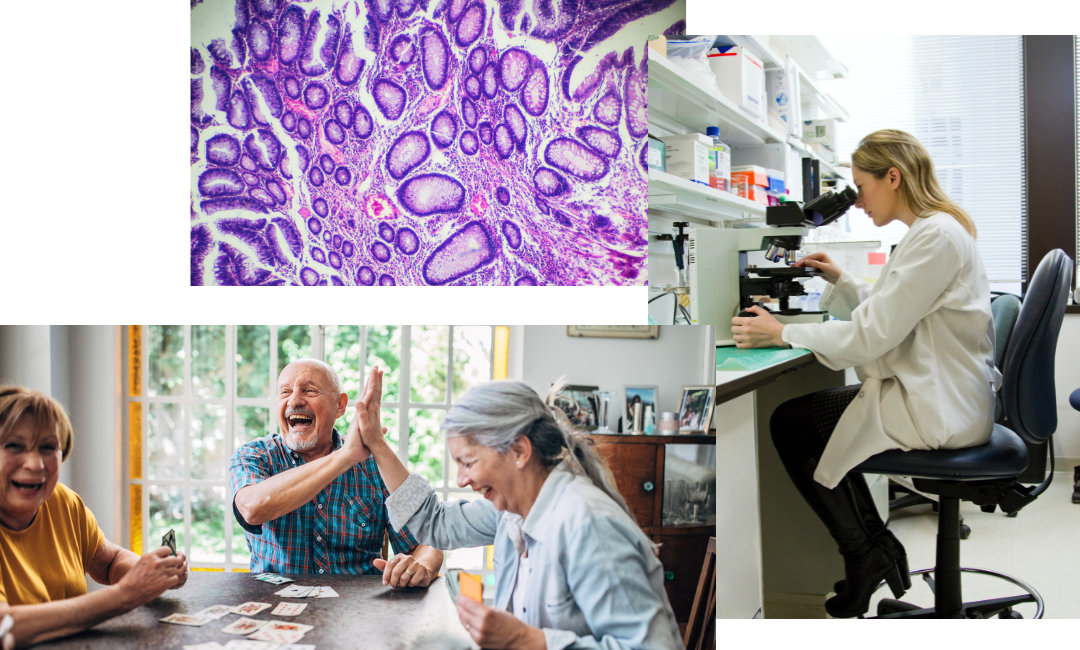
Multiple myeloma is a blood cancer that arises from the plasma cells in the bone marrow.[1] It is a heterogenous (highly variable) disease that is unique to every patient.[1] As multiple myeloma progresses, relapses to each line of therapy become more frequent.[2],[3] Multiple myeloma is currently incurable and after multiple relapses, remissions become progressively shorter, and patients need new and effective therapies to extend and improve their lives.[2],[3],[4]
We are striving to change outcomes for every patient with multiple myeloma, at every stage of disease, by applying cutting-edge technologies to reshape care – towards our ultimate goal of delivering a cure.
Multiple Myeloma in numbers

In the European Union, it is estimated that more than 35,300 people were diagnosed with multiple myeloma in 2022, and more than 22,700 patients died.[5]

More than half of patients have received treatments from three different classes of drugs by their third relapse.[6]


Multiple myeloma is most common in people over 65 years.[8]

Our Legacy in Multiple Myeloma
Building on nearly 20 years of dedicated leadership in multiple myeloma, our commitment to pioneer new therapeutic advances and continue redefining treatment paradigms has never been stronger.[9]
Our legacy of delivering firsts is a testament to our ambition to get in front of multiple myeloma and we remain focused on continuing to disrupt in areas of high unmet medical need to transform care and deliver curative regimens.
Our Goal: Working Towards a Cure
Our leadership is founded in the past, but we are looking ahead to an even brighter future where multiple myeloma is redefined as curable. We want to get in front of multiple myeloma and give people a chance to live longer, better lives free of their disease so they can focus on what’s important to them.

A multiple myeloma diagnosis is unique to each individual, which means we need more than just one option to face this complex disease. One simple breakthrough treatment isn’t enough when every patient is unique. That’s why we’re pursuing a portfolio of immunotherapies that target the disease from every angle, and at every stage. Curing multiple myeloma is our mission; we are prepared, and we are leading the way.
Edmond Chan, MBChB, M.D. (Res)
EMEA THERAPEUTIC AREA LEAD HAEMATOLOGY

Our Approach to Shifting the Treatment Paradigm
We are intentional about expanding our portfolio, pursuing first- and best-in-class complementary immunotherapies that attack the disease in different ways and can be used alone or in combination regimens throughout the course of the disease.
Our comprehensive clinical development programme includes an anti-CD38 antibody and targeted immunotherapy approaches such as highly personalised CAR T-cell therapy and off-the-shelf (readily available) T-cell redirecting bispecific antibodies.[10],[11],[12]
With our commitment and expertise, we are confident in our ability to continue to deliver tailored treatment options for all patients with multiple myeloma, and ultimately enable physicians to treat to cure.
Our Dedication to Improving Patient Outcomes and Experiences
Our innovation flows from understanding the needs of HCPs, researchers, patients, and patient advocates. We never lose sight of the people we serve, or the possibilities science unlocks. We are constantly listening and learning, using rigorous science and insights to shape our breakthroughs and get in front of multiple myeloma.
In 2023, we partnered with an expert group of patient advocates, clinical leaders, researchers and policymakers, to establish the Multiple Myeloma Collaboration Council. The first output from this partnership was the Multiple Myeloma Call-to-Action (MM CTA) which identified key areas of unmet need and suggested solutions on how to address them as we look to advance patient outcomes.[13]

Follow Us
CP-302019


